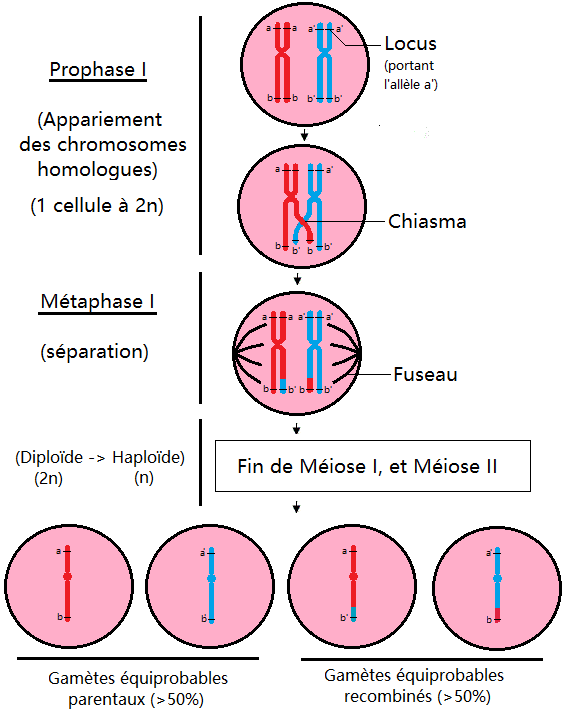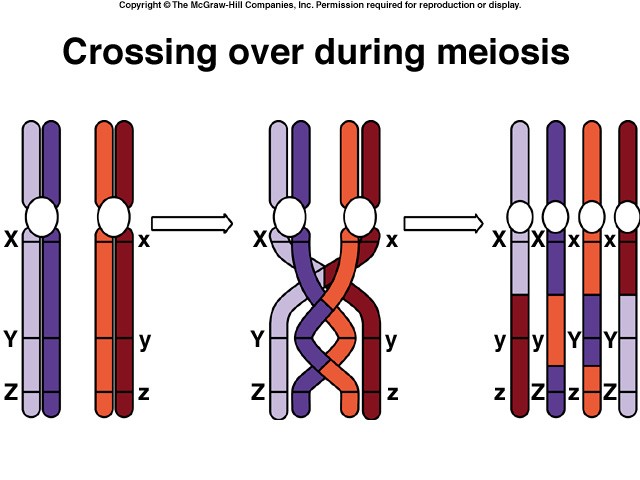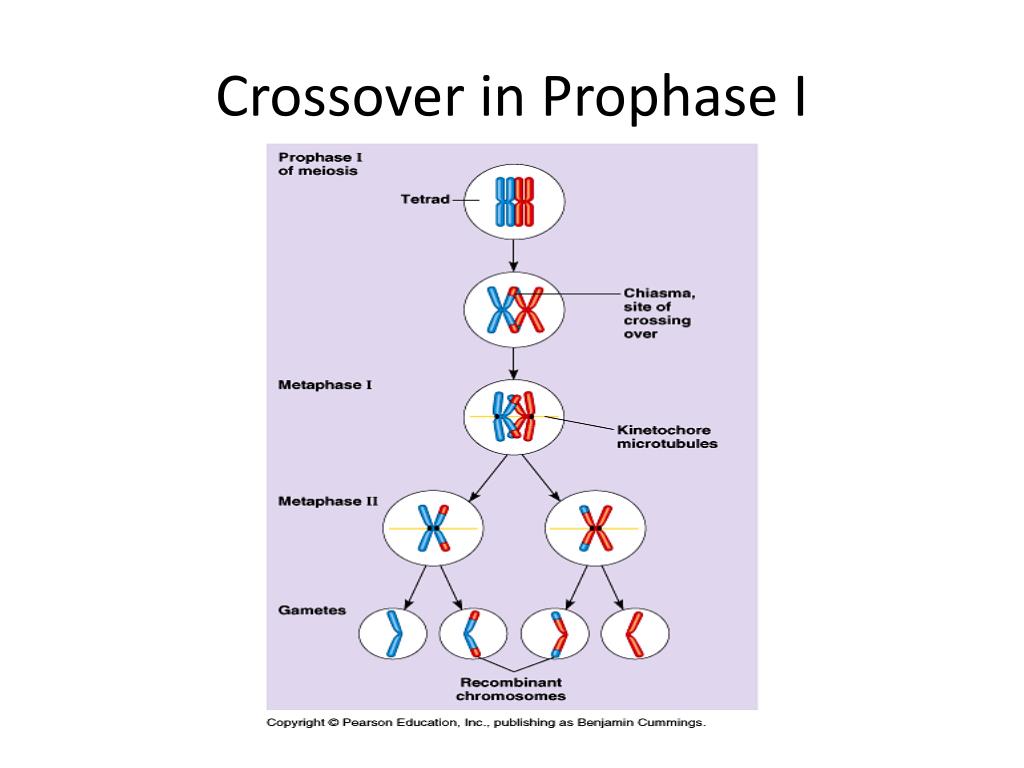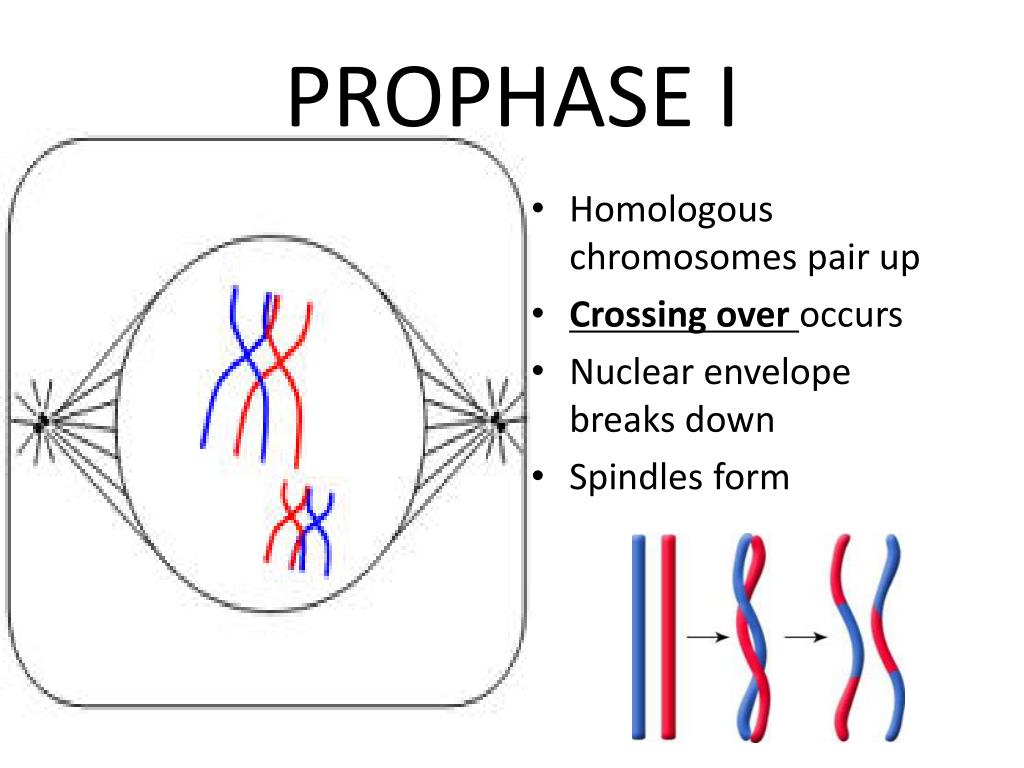

A lot of genetic test where they test your DNA to see if you have a particular disease or a chance for a particular disease, they're not actually testing for that gene they're actually testing for a linked gene that they found tends to be passed on along with the disease because they are still trying to figure out where exactly the disease gene is, so let's take a look at this and see how it works. Now, one thing about this is that genes that are far apart on the chromosome they tend to get crossed over very easily because they have lots of room for those breaks and exchanges to occur but if they're right smacked up next to each other it's very unlikely that you'll get the crossing over even between them so they tend to be inherited together.
CROSSING OVER PROPHASE 1 PLUS
The Human Genome Project has determined that humans have somewhere in the range of about 25,000 genes now if we only have 23 different kinds of chromosomes that tells you could do the same simple Math that we have roughly a 1000 genes plus or minus a bit on average per chromosomes so linked genes is simply the idea that if you have two genes on the same chromosomes, when that chromosome goes into a sperm or an egg those two genes travel together and windup being inherited together so they are "linked." This would violate Mendel's second law, the law of independent Assortment, but luckily there's this process during meiosis during the first step called prophase I that does this process called crossing over where physically a chromosome will break and exchange parts with its homologous pair so that even though two genes were right next to each other, maybe they get swapped over so your mum's version of a particular allele will get swapped over to the DNA that originally came from your dad and vice versa so that all of your children don't look the same. This work is licensed under a Creative Commons Attribution-NonCommercial-NoDerivatives 4.0 International License.When my students start trying to study linked genes initially they get kind of confused but when you first after you get past that first confusion and you start to learn what it really is it's actually pretty simple concept. Next, during anaphase II, the sister chromatids are pulled to opposite ends of the cells, and the cells elongate.įinally, during telophase II, the sister chromosomes uncoil, new nuclear membranes form, and the two cells are divided again, forming four new haploid cells called gametes. Here the spindle fibers attach to the chromosomes and again align them at the middle of the new cells. During this stage the chromosomes condense once again, the nuclear membrane breaks down, and the spindle apparatus forms in each of the two new cells. The next phase of meiosis is called Meiosis II. Here the spindle fibers are broken up, new nuclear membranes form, the chromosomes uncoil, and the cell divides into two daughter cells. During this stage, the microtubules, or spindle fibers, pull the homologous chromosomes apart and move them to opposite ends of the cell. This is followed by metaphase I where the connected pairs of chromosomes align at the middle of the cell.Īfter the pairs of chromosomes are aligned, anaphase I begins. This is called recombination or crossing over.



During this stage the DNA condenses into chromosomes.ĭuring prophase I, homologous chromosomes pair up and exchange sections of DNA. The first stage in Meiosis I is prophase I.
CROSSING OVER PROPHASE 1 MOVIE
See the Flash movie for the following sequence of images, Thumbnail images will bring up a larger, labeled version of the


 0 kommentar(er)
0 kommentar(er)
